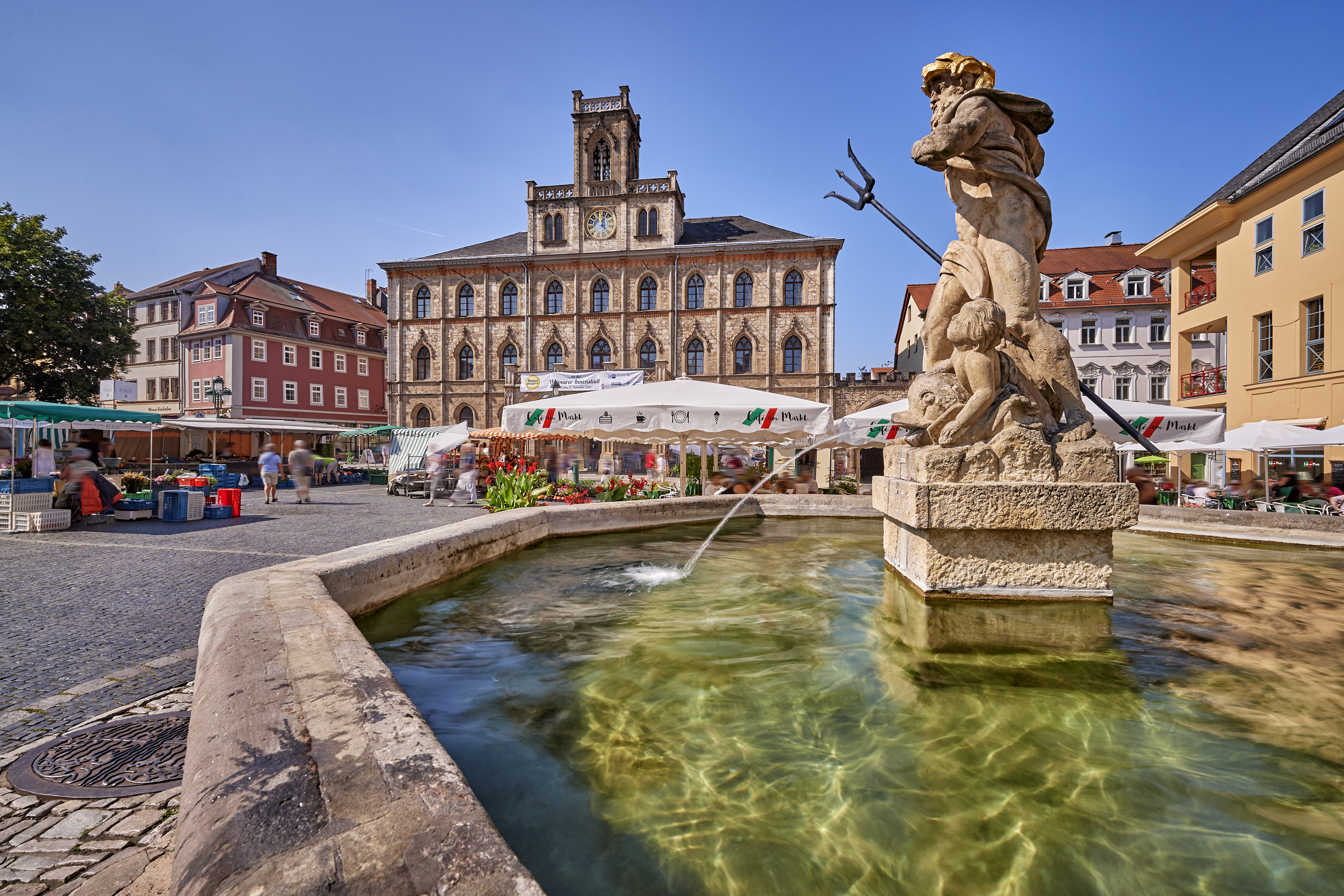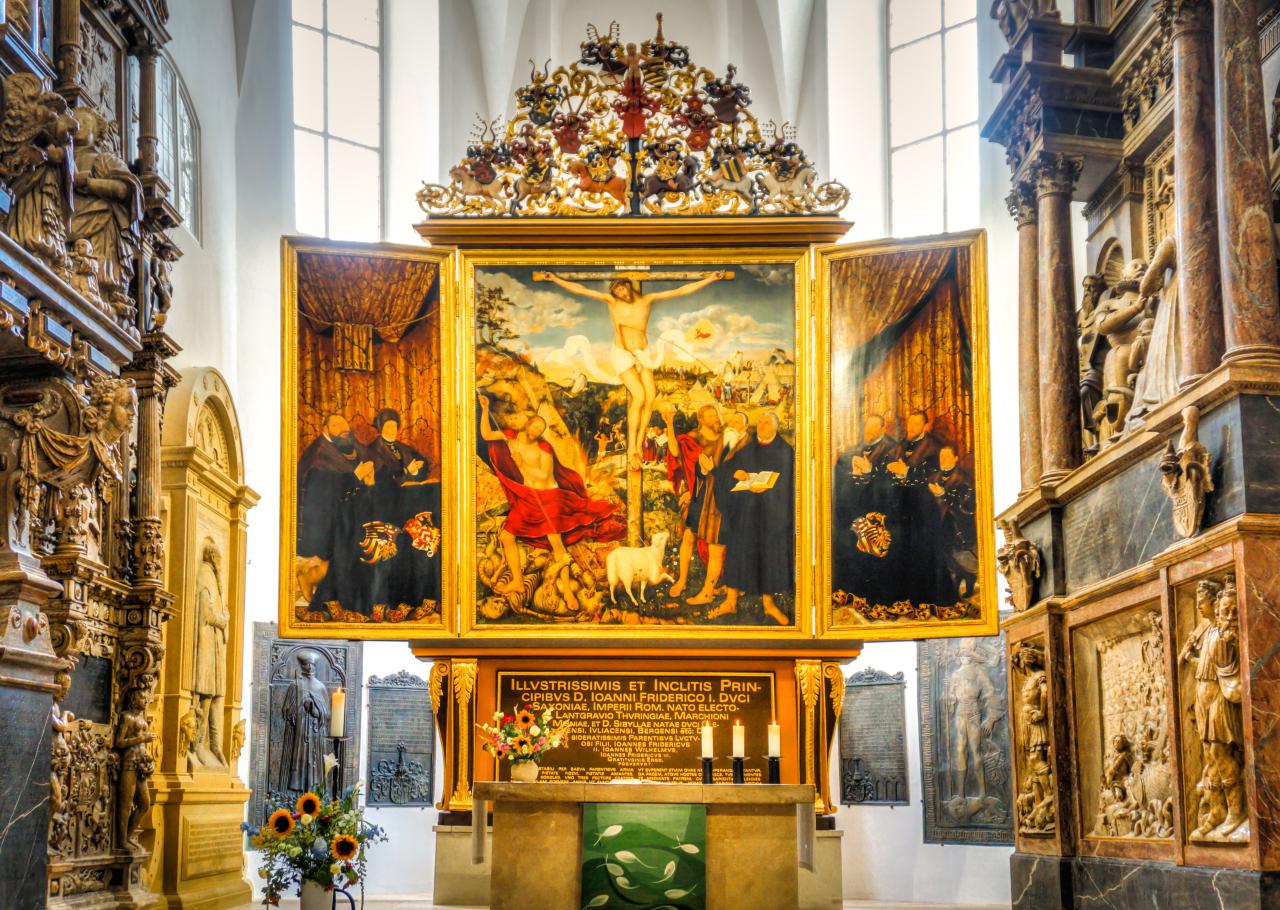
Weimar
Small town big on culture
Melanchthon, Cranach and Luther
In the summer of 1540 Luther let his "dearest Käthe, Doctorin Lutherin etc. ... humbly know that I am well here. I eat like a Bohemian and drink like a German, thank God, amen." It was Luther's last visit to Weimar. His friend Philipp Melanchthon had fallen seriously ill there and seemed to be struggling with death. But the sick man recovered and was to live for another 20 years. Luther himself, however, never made it back to Weimar and died in Eisleben in 1546.
Six years later, another of Luther's companions, Lucas Cranach the Elder, came to Weimar to spend the rest of his life in his son's house. He created a late masterpiece, the altar of the town church of St Peter and Paul, in collaboration with his son, Lucas Cranach the Younger. The famous altar shows both the reformer and the older Cranach, the painter of the Reformation. Both united for eternity.
The magnificent church is just one of Weimar's many UNESCO World Heritage Sites. The legendary Cranach Triptych Altarpiece is considered one of the world's most impressive testimonies to the history of the Reformation.

A real gem: the Cranach Altar in Weimar's city church ©Paul Hentschel, Thuringia Tourism Board
Weimar's rich world heritage
The former ducal residence town is famous for its UNESCO World Heritage Sites. The complex entry "Classical Weimar" includes the residences of the poets Goethe and Schiller as well as the palaces, gardens and collections of the Weimar dukes. Franz Liszt was also associated with the city for over 20 years and left his mark on its musical life, as did a young Johann Sebastian Bach many years earlier.
In 1919, Weimar took a bold step towards modernism with the founding of the Bauhaus. Avant-garde artists such as Walter Gropius, Lyonel Feininger, Paul Klee, Wassily Kandinsky, Johannes Itten or Oskar Schlemmer caused lasting unrest among the well-behaved citizens of Weimar. And heralded a new era. The sites of early Bauhaus history in Weimar are part of the UNESCO World Heritage Site.
TIP: DUCHESS ANNA AMALIA LIBRARY
Header: ©Florian Trykowski, Thüringer Tourismus GmbH










